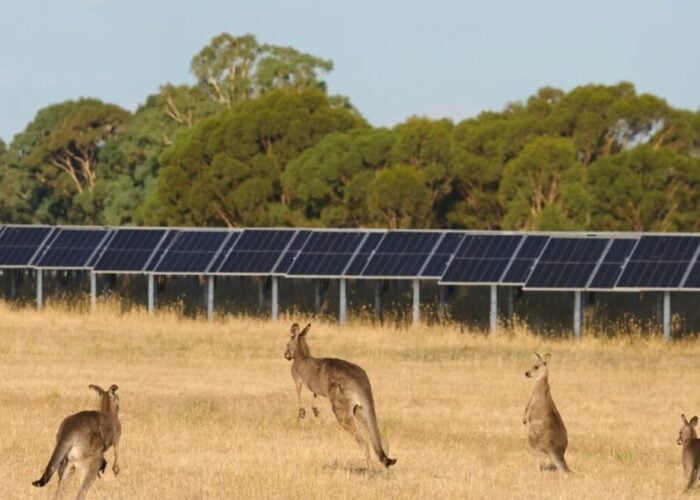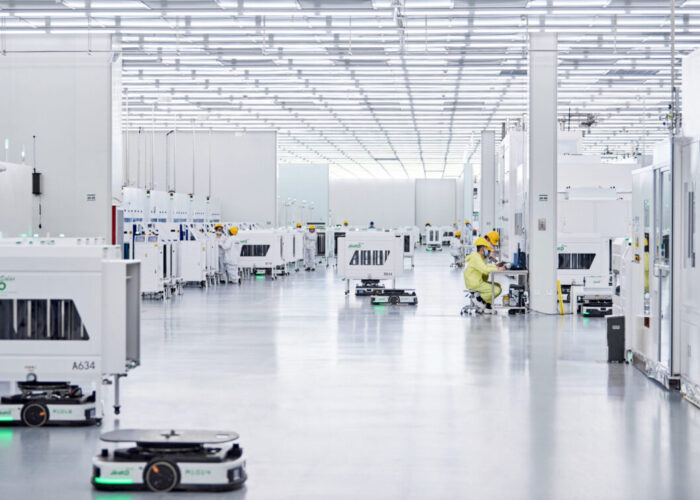
The lifting of political and cost-based brakes on European solar is set to awaken a sleeping giant, with subsidy-free solar projects potentially the norm all across Europe in just a few years.
A combination of more and more countries hitting grid parity, the ending of the Minimum Import Price (MIP) on Chinese imports as well as a temporary Chinese module oversupply means that the European solar market is on the cusp of booming, according to several developers and a major module supplier, who were speaking at the 'Solar and Storage Live 2018' conference in Birmingham, UK, today.
Unlock unlimited access for 12 whole months of distinctive global analysis
Photovoltaics International is now included.
- Regular insight and analysis of the industry’s biggest developments
- In-depth interviews with the industry’s leading figures
- Unlimited digital access to the PV Tech Power journal catalogue
- Unlimited digital access to the Photovoltaics International journal catalogue
- Access to more than 1,000 technical papers
- Discounts on Solar Media’s portfolio of events, in-person and virtual
Frank Niendorf, general manager Europe, at China-based manufacturer, JinkoSolar, said that the MIP ending has led to a huge IRR boost for investors and developers since it has allowed global market module prices to be used in Europe.
Lily Coles, commercial operations director, at UK-based developer Anesco, which has already built a subsidy-free solar-plus-storage plant in England, agreed:
“Coming out of MIP then opens up a huge door for us and the panels have always been the most expensive part of it. We've spent a lot of time whittling down the other components and being cost competitive while maintaining the quality on the inverters, the cabling, the ground-mount system and everything else, but the panels have been sort of out of our control, so it’s going to make a massive difference and we can now see that pipeline really growing.”
Dale Barnard, senior project engineer at Denmark-based developer, European Energy, also celebrated the effects of the MIP ending combined with China’s subsidy removals, citing an IHS Markit report on prices dropping 30% across the board, with panels in Europe bottoming out at €0.20/W.
He described these as “insanely cheap prices” that could only have been dreamed of last year – adding: “It almost opens up the entire European market for subsidy-free, perhaps with exceptions for some of the very northernmost countries.”
Niendorf cited several countries where post-subsidy projects are already proliferating or are set to kick-start merchant PV in the coming year, including Spain, Portugal, Italy, the UK and the Netherlands.
Perhaps, more importantly, he added: “From 2020/21 onwards it will be all over the place, no matter which country and we will have reached a system cost level that will allow the installation of projects without any kind of support.”
In the short-term, Niendorf stressed that while he expects prices to come down further to some extent, the overcapacity in China is a temporary phenomenon, and prices coming down 30% in such a short period of time raises questions over how sustainable those levels are. However, an industry that is not dictated by the politics of feed-in tariff (FiT) support also means that future module price fluctuations will be far less severe than in the past.
“Becoming independent from those subsidies will actually lead to a more stable supply and demand, which we have in other industries as well, so PV will get there,” he added.
Furthermore, both developers agreed that post-subsidy solar will drive both better quality and competition in projects. Investors become far more interested in technology when project margins and returns are predicated on the performance of the technology used rather than the comfort of a FiT subsidy. Coles said this means developers have to demonstrate their technology’s capabilities far more to investors whilst also focusing heavily on re-engineering plant designs.
Niendorf said that European solar has faced a tough five years held back by what he described as “artificial brakes” while other geographies boomed. Now most of those brakes have disappeared, but there is the major looming problem of grid integration.
However, he added: “I think this parity is a sleeping giant, and most players are not aware of what potential also in Europe that parity has.
“We can see so much development activity all across Europe, which scares the commercial conservative utilities like hell. It’s a great chance for Europe as well to become finally more independent, so we are extremely bullish for the European market and in general as well because this momentum cannot be stopped now.
“We have reached a cost level which is unbeatable. It’s the cheapest electricity energy source in the world and we have not finished that yet – it’s going down further.”
Barnard agreed: “Solar has got a raft of positives from ease of installation to low cost to low maintenance. […] The only thing that was holding it back was the high cost of procurement versus the power prices that you can achieve and once we hit parity that problem disappears, you’re no longer tied to political issues, you're completely divorced from that process and you can rely on the market to drive things forward so its incredibly exciting.”







